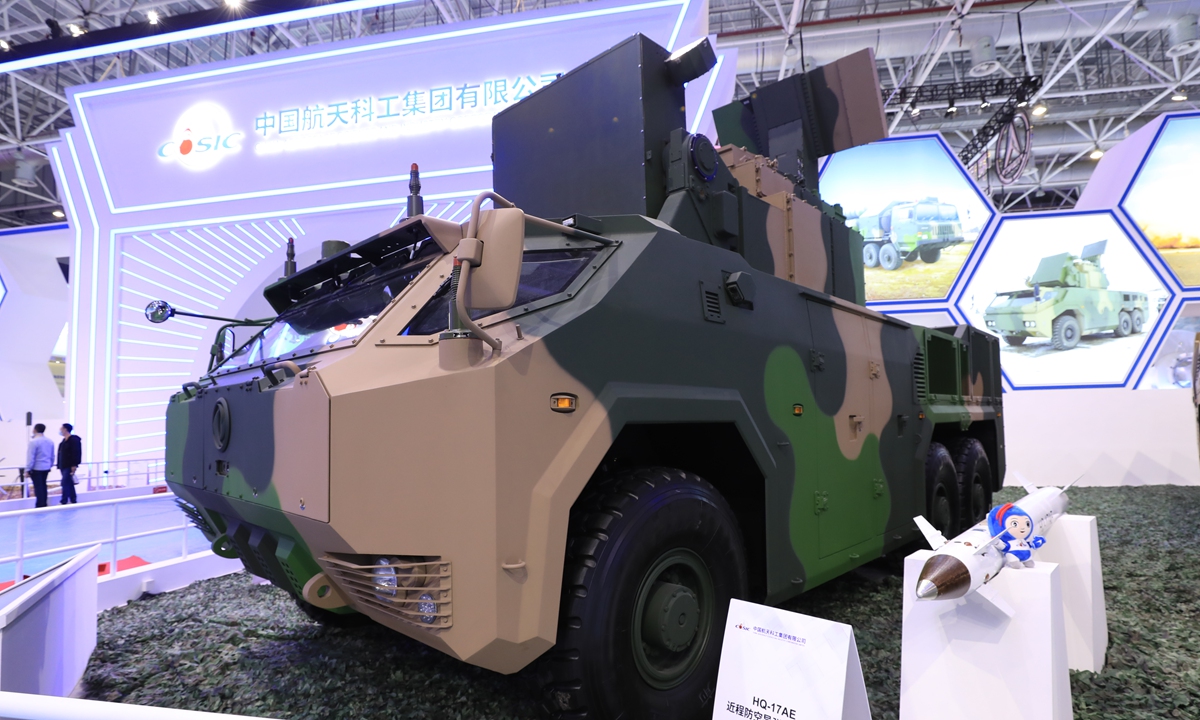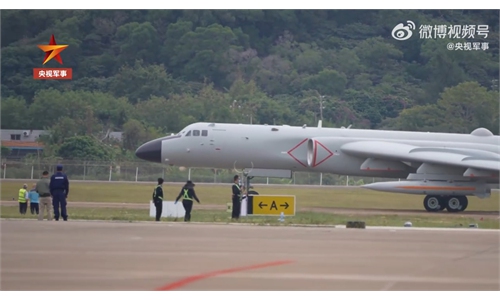Exclusive: New anti-drone defense system to debut at Airshow China, offering smart and effective solutions to unmanned modern warfare

HQ-17AE short-range air defense missile weapon system Photo:Courtesy of CASIC
In response to new challenges in the modern warfare brought by drones with low flight altitude, slow flight speed and small radar reflection area, China has come up with a new indigenous air defense system and put it on display at the upcoming 14th China International Aviation and Aerospace Exhibition in Zhuhai, South China's Guangdong Province.
The new system was designed and developed by the Second Academy of the China Aerospace Science and Industry Corporation (CASIC), the country's largest air-space missile manufacturer. With the HQ-17AE short-range air defense missile weapon system at its core, the new system is projected to make its debut at this year's exhibition, also known as the Airshow China.
"The rise of 'low, slow and small drones' with rather agile applications on the battlefield has transformed the landscape of warfare, which tends to achieve surprisingly good strike effects," Wang Wengang, the spokesperson with the CASIC Second Academy, told the Global Times.
Even the most advanced anti-air weapons systems could become useless when facing with such "low, slow and small drones," as the drones would be flying in the shadow zone of the radars. "Generally speaking, most of the anti-air radars work better when detecting higher air space, and due to the disturbance of the low altitude, they are not as effective in the near-ground areas," Wang said.
The low flight speed and small radar reflection area also increase difficulty to traditional anti-air systems to identify them and attack them, according to the spokesperson. The low cost of drone weapons, which are much cheaper than a missile or cannon ball, also makes it expensively pricy to strike them, Wang explained.
Against such backdrop, the CASIC Second Academy has created a special anti-drone system, combining multiple systems and weapons to address the new challenges brought by drones.
Such anti-drone system is made up with early-warning detection, monitoring control and interception weapons.
The electro-optic radar and DK-1 low-altitude detecting radar, which will make debut at the Airshow China this year, will team up to work together at the early-warning detection stage. The electro-optic radar has the capabilities of visual imaging with high precision and it is also capable of "seeing" multiple targets at the same time.
According to a statement provided by the developers, it is capable of positioning more than 20 targets in a mid-range from 500 meters to 18 kilometers per second.
DK-1, the special drone-probing system, can also monitor and track ground vehicle targets, which has played crucial parts in several large-scale events in China, supporting city air-defense and defense missions for key facilities.
The ZK-K20 ground missile anti-air control system, which is the brain of the anti-drone system, will process detection information collected by the early-warning system and quickly respond to the drone target according to the extent of their threats, and deploy proper weapons systems to conduct attack against the targets, maximizing the joint combat strength of a range of different weapons.
HQ-17AE short-range air defense missile weapon system and the QW-12 portable anti-air missile weapon system will be the fists of the system, playing key roles at the interception end.
The HQ-17AE system can effectively intercept stealth and non-stealth fixed-wing aircraft, armed helicopters, unmanned aerial vehicles, cruise missiles and tactical air-to-surface missiles, according to the academy. It has an interception slant range of 1.5 kilometers to 20 kilometers, and is capable of guiding four missiles to intercept four targets at the same time.
According to Wang, apart from missiles and cannon balls, the interception system is also equipped with soft anti-drone measures such as the electromagnetic interference and electronic deception, addressing the cost problems in dealing with cheap drones.
ZR-1500 unmanned smart defense weapon system, serving as the side vehicle for the HQ-17AE system, will also make its debut at the Airshow China. It has an interception slant range of 5 kilometers and can intercept targets including fixed-wing aircraft, helicopters and drones as well as enemy personnel and armed vehicles within the range.
It can carry 12 micro-missiles and four small-scale missiles and two surveillance and strike integrated patrol missiles by default. And it can also switch to carry other types of weapon systems such as machine guns if necessary.
The anti-drone system is making its debut this year at the Airshow China, which is in line with the development trend of modern unmanned battle. "It is flexible and can add up like Lego blocks with agile and smart ingredients, forming a new type of deterrence power,'' Wang said.



